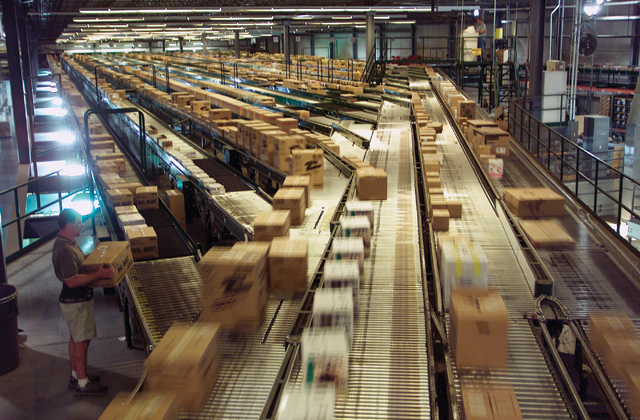
The Real Secret
Despite their perceived simplicity, Walmart has learned how
to successfully incorporate technology into their strategy, making their
business more efficient. It is often
thought that their ability to sell at such low prices comes from their size and
bargaining power over their suppliers.
Their real savings come from their well-organized supply chain, since it
benefits not only them, but their suppliers as well.
During the early stages, suppliers were hesitant to provide
information, concerned of compromising their own competitive positions. However, they have now adopted Walmart’s
system. Both store and supplier share
and integrate data so that they can have a better understanding of what
products sell. This enables the store to
keep its low storage prices and suppliers to adjust their production depending
on the demand (sales).
Moving Forward
Because they are almost considered an empire, Walmart can
afford to experiment and pioneer technologies that have not gone through deep
testing. This has helped them
restructure their business. They use
technology to simplify work and increase efficiency, besides automating
existing processes. Part of their
experimentation has been the implementation of RFID; they tag products (or
their labels) with tiny chips that emit radio signals to small receivers [2]. This technology was adopted with the
objective of making barcode scanning technology even simpler and more
efficient.

Is this the Right Move?
The use of RFID chips might increase as their price
decreases [3]. However, this technology has
yet to prove its value. There is concern
on security; can you imagine driving home and as you approach your driveway,
you’ve picked up information on how many rolls of toilet paper are in each of
your neighbors’ houses?
Maybe Walmart sees something we don’t; maybe they have
learned how to recognize and see potential in new technologies and they’ve made
sure that the mindset of “invest only in what will guarantee returns” is
embedded in every employee. Could it be
a cultural thing? I don’t know, but they sure do seem to be very aware of every
penny they invest, which leads to more intelligent decision making.
What’s the Panorama Like Today?
According to IDTechEx, RFID is rapidly growing for apparel
tagging [4]. Walmart continues to use
RFID, but they now asked their suppliers to put the RFID chips on the packaging
or removable labels, instead of the product itself, to address the security
issue mentioned before. Smart move
Walmart. The incorporation of RFID
enables them to locate and quantify merchandise faster than they could before,
which is an essential advantage for supply chain managers, and also drives
business value.
This is all very positive and nice, but I cannot let this
topic go under the radar. Since this is
the last blog, I now encourage the reader to be the one who challenges this new
trendy concept. Imagine being a supply
chain manager and having visibility to absolutely everything; how difficult (or
possible) would it be for this sole person to have control of all the
information being channeled to him/her? Do you think this could lead to a more
centralized -and difficult to control- chain management structure? Can we even
call it a “chain” or are we looking at a very complex supply network now?
References:
By: Elisa Taymes
No comments:
Post a Comment
Note: Only a member of this blog may post a comment.